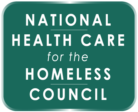Trauma-Informed
Organizations
Research: Trauma-Informed Organizations
Change Package: Cultural Sensitivity & Humility
Domain
Honoring the voices and experiences of marginalized groups
Using feedback and comments of people from marginalized groups and lived experiences to create change. Self-reflection on how one reacts and responds (internally and externally) when people from marginalized groups speak on any issue or share themselves in any manner.
Learning about diverse cultures and experiences
Creating opportunities to educate and expose people to various cultural experiences.
Considering the impact of historical oppression/ historical trauma
Historical trauma is the cumulative emotional harm of an individual or generation caused by a traumatic experience or event.
Identifying the role of privilege
Social privilege is a special, unearned advantage or entitlement, used to one’s own benefit or to the detriment of others; often, the groups that benefit from it are unaware of it.

